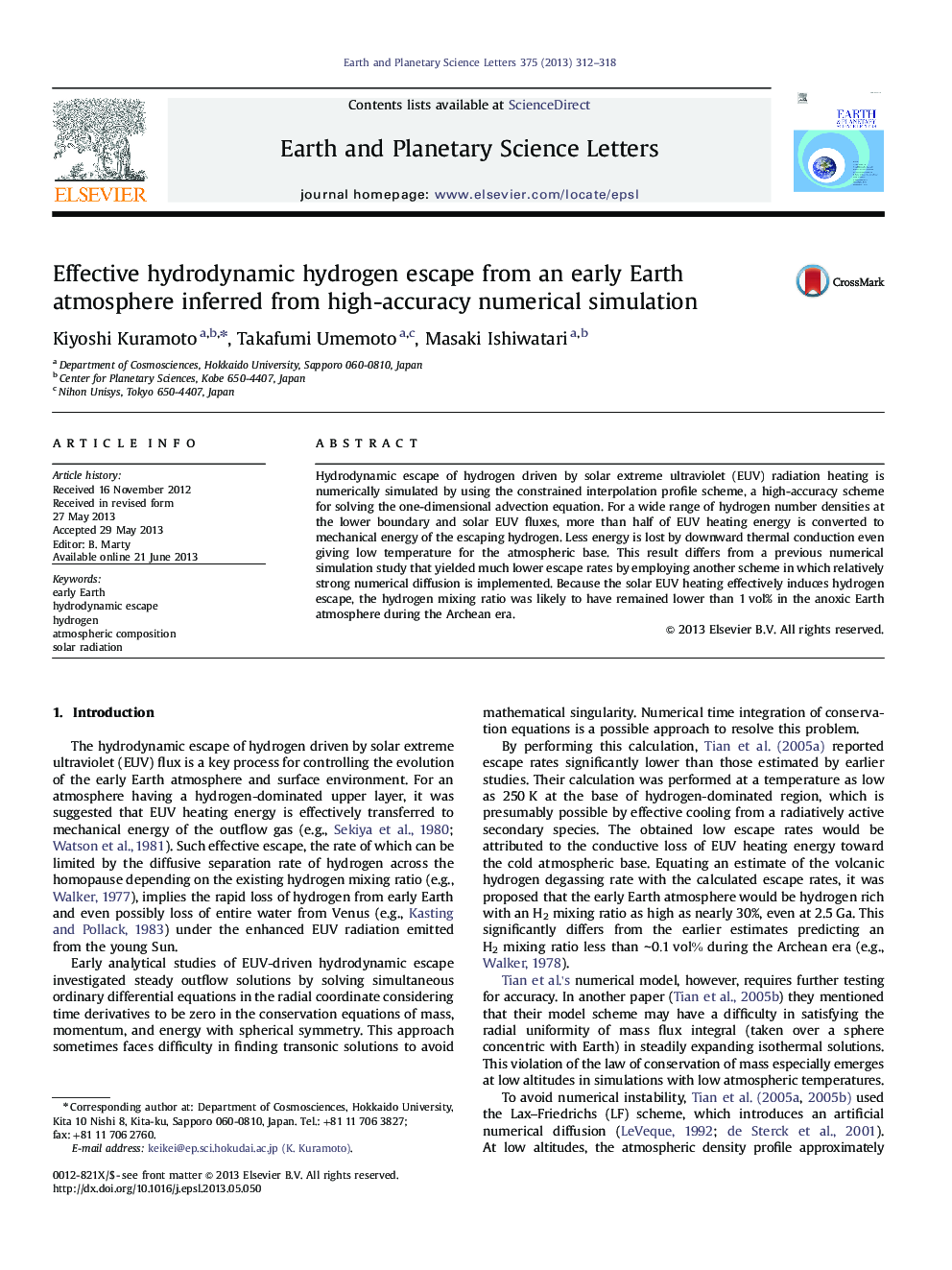| Article ID | Journal | Published Year | Pages | File Type |
|---|---|---|---|---|
| 6430223 | Earth and Planetary Science Letters | 2013 | 7 Pages |
â¢Hydrodynamic hydrogen escape from early atmosphere is numerically simulated.â¢A high accuracy numerical scheme is applied to clarify exact energy partitioning.â¢Most of the absorbed EUV energy is transferred to the mechanical energy for escape.â¢Such effective transfer occurs even under low atmospheric base temperature.â¢Early Earth atmosphere was likely depleted in hydrogen during Archean.
Hydrodynamic escape of hydrogen driven by solar extreme ultraviolet (EUV) radiation heating is numerically simulated by using the constrained interpolation profile scheme, a high-accuracy scheme for solving the one-dimensional advection equation. For a wide range of hydrogen number densities at the lower boundary and solar EUV fluxes, more than half of EUV heating energy is converted to mechanical energy of the escaping hydrogen. Less energy is lost by downward thermal conduction even giving low temperature for the atmospheric base. This result differs from a previous numerical simulation study that yielded much lower escape rates by employing another scheme in which relatively strong numerical diffusion is implemented. Because the solar EUV heating effectively induces hydrogen escape, the hydrogen mixing ratio was likely to have remained lower than 1Â vol% in the anoxic Earth atmosphere during the Archean era.
